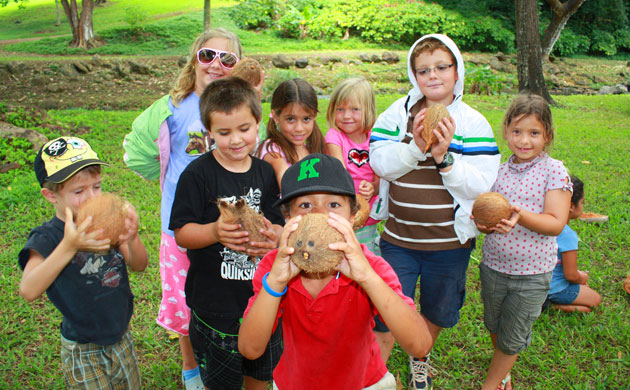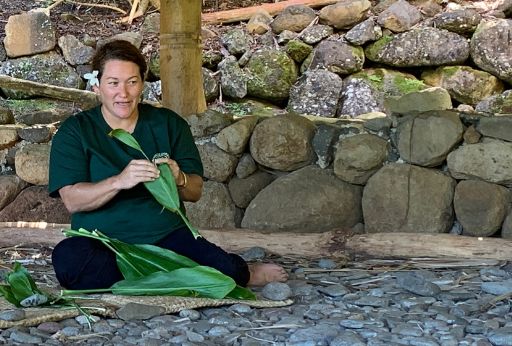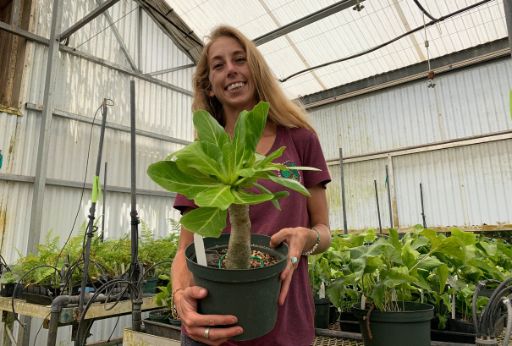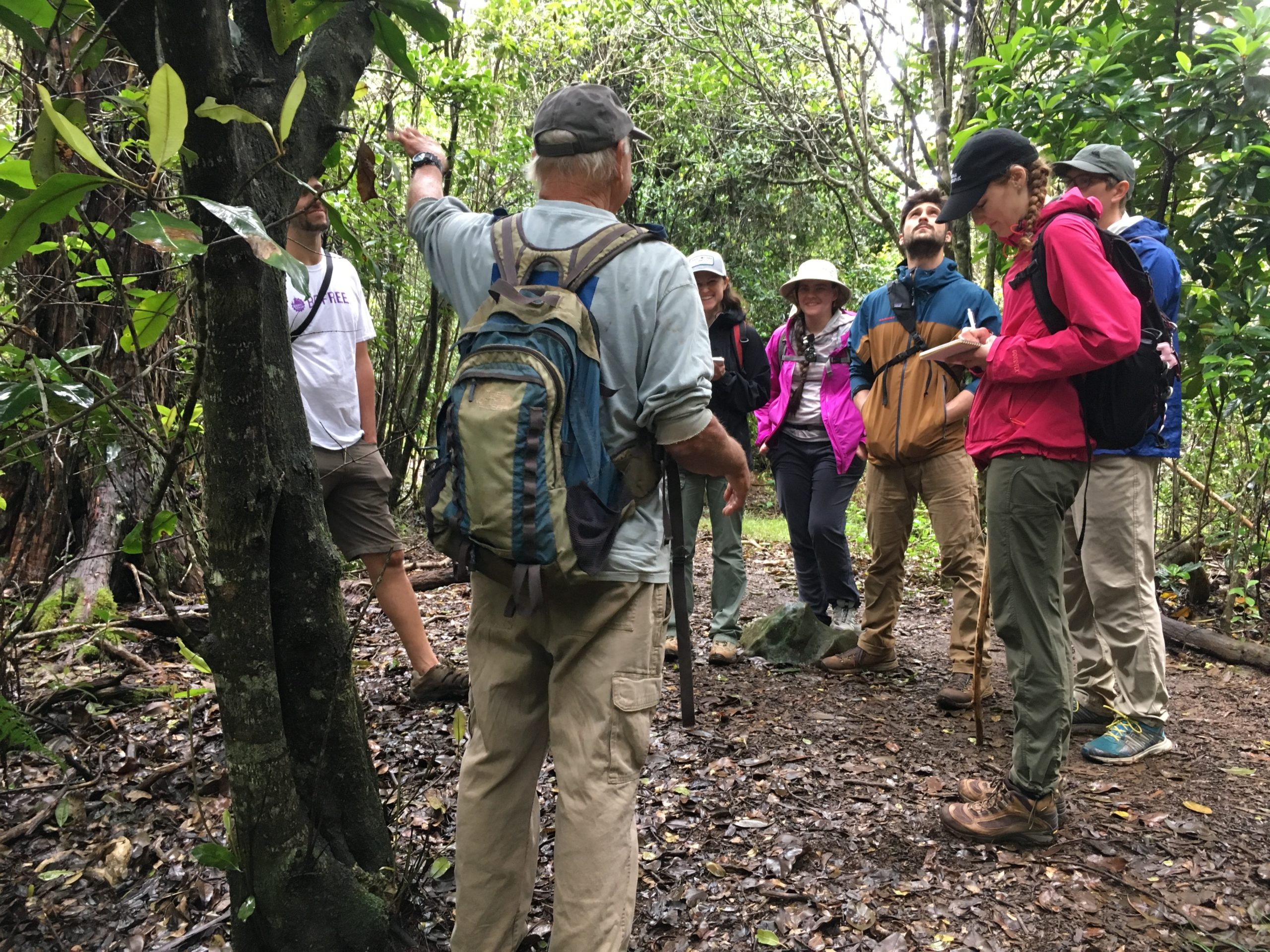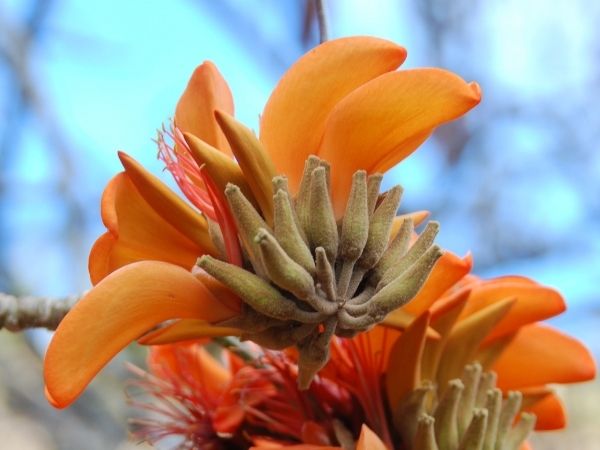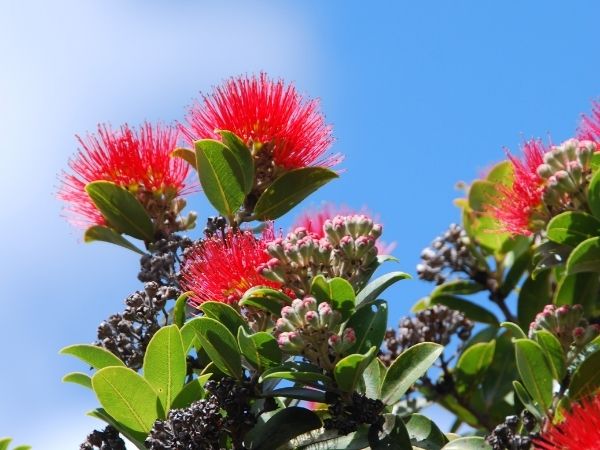Tropical Plant Database - Plant Details
Ochrosia kauaiensis
Conservation Status
- IUCN: critically endangered
- USFWS: None
- Listed with CPC
Genus: Ochrosia
Species: kauaiensis
Species Author: H. St. John
Vernacular: Holei
A member of the Dogbane family (Apocynaceae), Ochrosia kauaiensis, known as Holei in Hawaiian, is a 6-8 meter tree that is endemic to the island of Kaua'i. Leaves are 3-4 per node, and are narrowly elliptic to oblanceolate shaped. Holei flowers in strongly congested inflorescences. Drupes are yellowish brown at maturity, and is smooth with a lanceoloid shape. Holei is rare in mesic forest 200-350 m in elevation, found only in the Napali Coast and Hi'i Mountains (slopes of Mount Kahili) area on Kaua'i.
- Wagner, W. L., Herbst, D. R., and S. H. Sohmer. 1999. Manual of the Flowering Plants of Hawaii. University of Hawaii Press, Bishop Museum Press, Honolulu, Hawaii.
- Wagner, W.L., Herbst, D.R., & Lorence, D.H. (2005-). Flora of the Hawaiian Islands website. http://botany.si.edu/pacificislandbiodiversity/hawaiianflora/index.htm
This database entry has been complied by Matthew Kahokuloa, Jr.
Holei (Ochrosia kauaiensis) was used in multiple practices. The juices contained in the bark was a source of yellow dye for kapa (bark cloth). The wood of Holei was sometimes used to make the gunnels for canoes. The wood was also one used in making la’au kahi olona, or papa olona, the long slender thin hardwood boards used for scraping olona (Touchardia latifolia).
- Kamakau, S.M. 1976. The Works of the People of Old - Na Hana a ka Po`e Kahiko. Bishop Museum Press, Honolulu, 170 pp.
- Holmes, T. 1981. The Hawaiian Canoe. Editions Ltd., Hanalei, Kaua`i, Hawai`i, 191 pp.
- Summers, C.C. 1990. Hawaiian cordage. Pacific Anthropological Records Vol. 39. Bishop Museum Press, 129 pp.
- Mederiros, A. C. Medeiros, C.F. Davenport, and C.G. Chimera. Auwahi: Ethnobotany of Hawaiian dryland forest. U.S. Geological Survey. http://hear.its.hawaii.edu/naturalareas/auwahi/ethnobotany_of_auwahi.pdf
Ochrosia kauaiensis is one of the National Tropical Botanical Garden’s (NTBG) focal species for reaching goals of the Hawai'i Strategy for Plant Conservation. Currently, among 25 accessions, 82 individuals are outplanted in Limahuli and McBryde Gardens and Limahuli Lower Preserve. Mapping, tagging, and additional field collections are underway for all remaining individuals, for ex situ conservation at NTBG Kaua'i Gardens and distribution for ex situ conservation at multiple other gardens including NTBG’s Kahanu Garden in Hana, Maui; The Kampong in Coconut Grove, Florida; and Montgomery Botanical Center in Coral Gables, Florida.
- Walsh, S. 2018. Ochrosia kauaiensis. The IUCN Red List of Threatened Species 2018: e.T33561A83804639. https://dx.doi.org/10.2305/IUCN.UK.2018-2.RLTS.T33561A83804639.en
Ochrosia kauaiensis is endemic to the Hawaiian Islands, between 150 and 435 metres elevation on the island of Kaua'i. Holei is rare in mesic forest 200-350 m in elevation, and can be found only in the Napali Coast and Hi'i Mountains (slopes of Mount Kahili) area.
- Wagner, W. L., Herbst, D. R., and S. H. Sohmer. 1999. Manual of the Flowering Plants of Hawaii. University of Hawaii Press, Bishop Museum Press, Honolulu, Hawaii.
- Walsh, S. 2018. Ochrosia kauaiensis. The IUCN Red List of Threatened Species 2018: e.T33561A83804639. https://dx.doi.org/10.2305/IUCN.UK.2018-2.RLTS.T33561A83804639.en
The name derived from the Greek ochros, pale yellow, in reference to the fruit color. Pukui and Elbert (1986) stated that kapa dyed with Holei or the act of dyeing kapa with it are also known as Holei.
- Wagner, W. L., Herbst, D. R., and S. H. Sohmer. 1999. Manual of the Flowering Plants of Hawaii. University of Hawaii Press, Bishop Museum Press, Honolulu, Hawaii.
- Pukui, M. K., & Elbert, S. H. 1986. Hawaiian dictionary: Hawaiian-English, English-Hawaiian. Honolulu: Univ. of Hawaii Press.
IUCN status: Critically Endangered (CR): Ochrosia kauaiensis is endemic to the island of Kaua'i and approximately 150 individuals remain, with a maximum of 50 mature individuals in the largest subpopulation. It continues to experience severe and ongoing decline in habitat quality and quantity, and number of individuals, due to the impacts of nonnative invasive plants and animals.
Federal Listing Status: No Status: Although not federally listed as Threatened or Endangered, the taxon is rare with approximately 150 individuals remaining. It should be proposed for listing/protection by the U.S. Endangered Species Act.
Major threats to this taxon include displacement by non-native, invasive plant species such as Aleurites moluccanus, Clidemia hirta, Clusia rosea, Cyathea cooperi, Elephantopus mollis, Erigeron karvinskianum, Hedychium gardnerianum, Lantana camara, Pluchea carolinensis, Psidium guajava, Schefflera actinophylla, and Schinus terebinthifolia. Invasive animals, such as pigs, goats, and rats, disturb native habitat and impact the plants directly. Rats predate seeds, resulting in very little to no regeneration in the wild.
- Walsh, S. 2018. Ochrosia kauaiensis. The IUCN Red List of Threatened Species 2018: e.T33561A83804639. https://dx.doi.org/10.2305/IUCN.UK.2018-2.RLTS.T33561A83804639.en
Although a few seeds have been stored in NTBG’s Seed Bank and Laboratory, it is assumed that Ochrosia kauaiensis is a recalcitrant species sensitive to desiccation (drying) and freezing. Further research is needed on general ecology, life history, seed storage, population dynamics, trends, and genetics, and threats.
- 001522 - collected by J. Arakawa in 1976
- 001520 - collected by Tim Flynn in 1986
- 001521 - collected by Tim Flynn in 1986
- 031236 - collected by Chipper Wichman in 1989
- 010788 - collected by Chipper Wichman in 1989
- S046602 - collected by Steve Perlman in 1991
- 021585 - collected by Steve Perlman in 1996
- 021841 - collected by K. R. Wood in 1996
- 028248 - collected by Steve Perlman in 1999
- 033888 - collected by Steve Perlman in 1999
- 033871 - collected by Steve Perlman in 1999
- 062315 - collected by K. R. Wood in 2005
- 047199 - collected by K. R. Wood in 2006
- 047228 - collected by K. R. Wood in 2006
- 052402 - collected by K. R. Wood in 2008
- 072901 - collected by Steve Perlman in 2009
- 072736 - collected by Natalia Tangalin in 2011
- 059505 - collected by K. R. Wood in 2011
- 065070 - collected by Steve Perlman in 2012
- 068624 - collected by Merlin Edmonds in 2014
- 075874 - collected by Merlin Edmonds in 2014
- 085152 - collected by K. R. Wood in 2015
- 085417 - collected by K. R. Wood in 2015
- 080063 - collected by K. R. Wood in 2017
- 080059 - collected by K. R. Wood in 2017
- 080014 - collected by K. R. Wood in 2017
- Unassigned - collected by Seana Walsh in 2017
- Unassigned - collected by Seana Walsh in 2017
- Unassigned - collected by Seana Walsh in 2017
- Unassigned - collected by Seana Walsh in 2017
- 080054 - collected by K. R. Wood in 2017
- Unassigned - collected by Seana Walsh in 2017
- Unassigned - collected by Seana Walsh in 2017
- Unassigned - collected by Seana Walsh in 2017
- 076415 - collected by Seana Walsh in 2017
- Unassigned - collected by Seana Walsh in 2017
- 080197 - collected by K. R. Wood in 2017
- 080153 - collected by K. R. Wood in 2017
- 081346 - collected by Seana Walsh in 2017
- Unassigned - collected by Seana Walsh in 2017
- Unassigned - collected by Seana Walsh in 2017
- 082934 - collected by Seana Walsh in 2018
- 082935 - collected by Seana Walsh in 2018
- Unassigned - collected by Seana Walsh in 2018
- Unassigned - collected by Seana Walsh in 2018
- 082159 - collected by Adam M. Williams in 2018
- 091967 - collected by Uma Nagendra in 2020
- 083408 - collected by Uma Nagendra in 2020
- 084604 - collected by Uma Nagendra in 2020
- 086023 - collected by Ashely Ramelb in 2021
- 091759 - collected by Uma Nagendra in 2021
- Unassigned - collected by Laulea Miike in 2024
We currently have 52 herbarium specimens for Ochrosia kauaiensis in our collection. Click on any specimen below to view the herbarium sheet data.
.svg)


.jpg)


